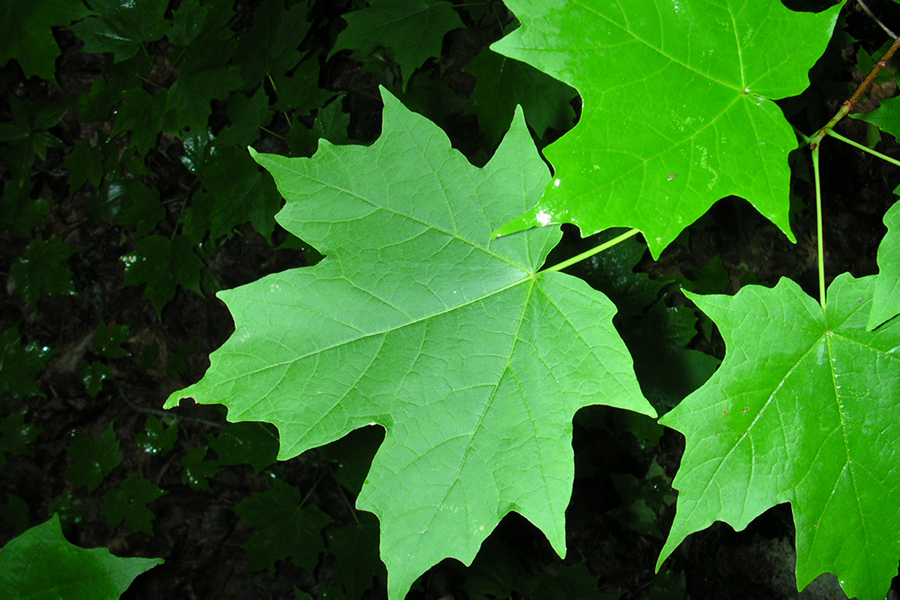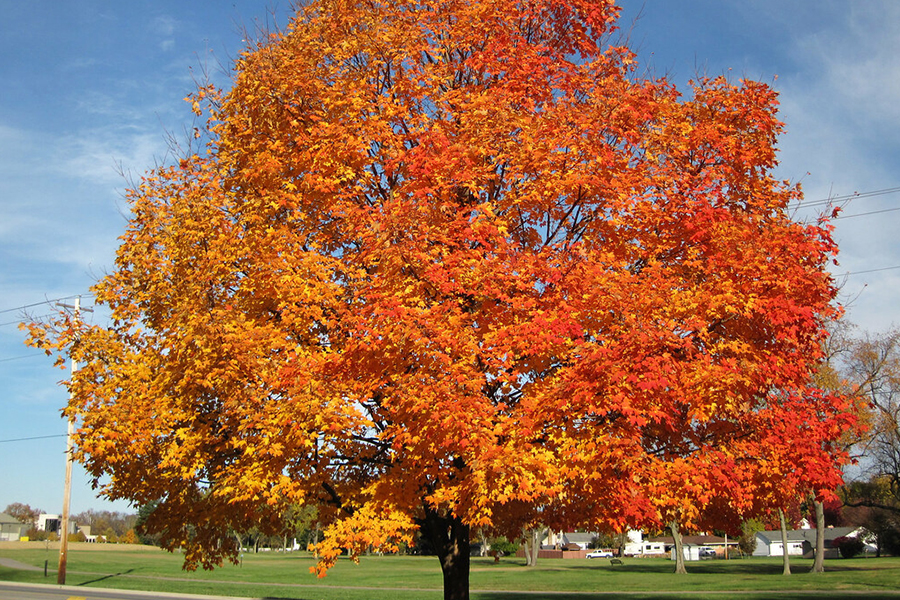Acer saccharum
An icon of New England and Canada, sugar maples are known for their stunning fall colors and sap which can be boiled into maple syrup.
Location
The sugar maples can be spotted lining Appleton Road. This is no coincidence; they would have been placed along the road for easy access by cart when farming them for syrup. You may notice the tags which say “do not tap;” this is because they have been treated for the invasive Asain long-horned beetle.


History at Hadwen
The striped, red, and sugar maples are documented on the Hadwen estate as early as 1882, but the sugar maple is not recorded until 1900 when Hadwen documented the sugar maple as one of the most prominent of his 20 varieties of maple tree. He writes that the maple family is one of “great beauty, and its members are in the front rank of deciduous trees.” He planted many along the streets and roads which gave an “abundance of shade, and are the glory of the autumn.” To him, the maple was “a favorite tree which well repays the attention it receives.”
Keep Learning
Detailed Species Information
The sugar maple is a deciduous tree in the family Sapindaceae native to the eastern United States and southeastern Canada. The sugar maple is a large tree, ranging from 50–100 feet (15–30 meters) in height and 4 feet (1.2 meters) in trunk diameter. The sugar maple also is a long-lived tree, with some specimens living up to 300 years. The sugar maple’s bark is gray-brown and develops a vertical scaley texture with age. Its green leaves are five-lobed as typical for many maple species. In fall, sugar maple leaves turn brilliant shades of orange, red, and yellow. The fruits of the sugar maple are two-winged samara, also commonly found in many maple species.
The tree prefers rich, well-drained soil and cool woodlands. It is considered to be a highly shade-tolerant species. In New England, the maple tree faces threats caused by invasive species including the Norway maple (Acer platanoides) and the pest Asain long-horned beetle (Anoplophora glabripennis). Because of their tolerance to urban conditions, high levels of seed production, and fast growth, the Norway maple often outcompetes sugar maples in many natural areas. The Asian long-horned beetle, which infests maple trees, bores into maple bark and disrupts the transport of vital nutrients and water. The Asian long-horned beetle was introduced to the United States in 1996 and was found in Worcester County in 2008. For this reason, many of the sugar maples in the Hadwen Arboretum are treated to protect against the Asian longhorn beetle and are marked with tags that read “do not tap.”
The sugar maple is highly valued for its wood. Its lumber is durable and has a unique wavy grain. It is ideal for furniture, flooring, and decorative veneers. The tree is also prized in landscaping for its ornamental value, with many cultivars selected for their brilliant fall foliage. Most notably, the sugar maple is one of the most important trees for the production of maple syrup. Sugar maple sap is harvested from the tree in early spring and boiled down to create a sweet syrup with a distinct “maple” flavor. The tree’s sap is also used in traditional medicine to treat coughs and other respiratory ailments.
